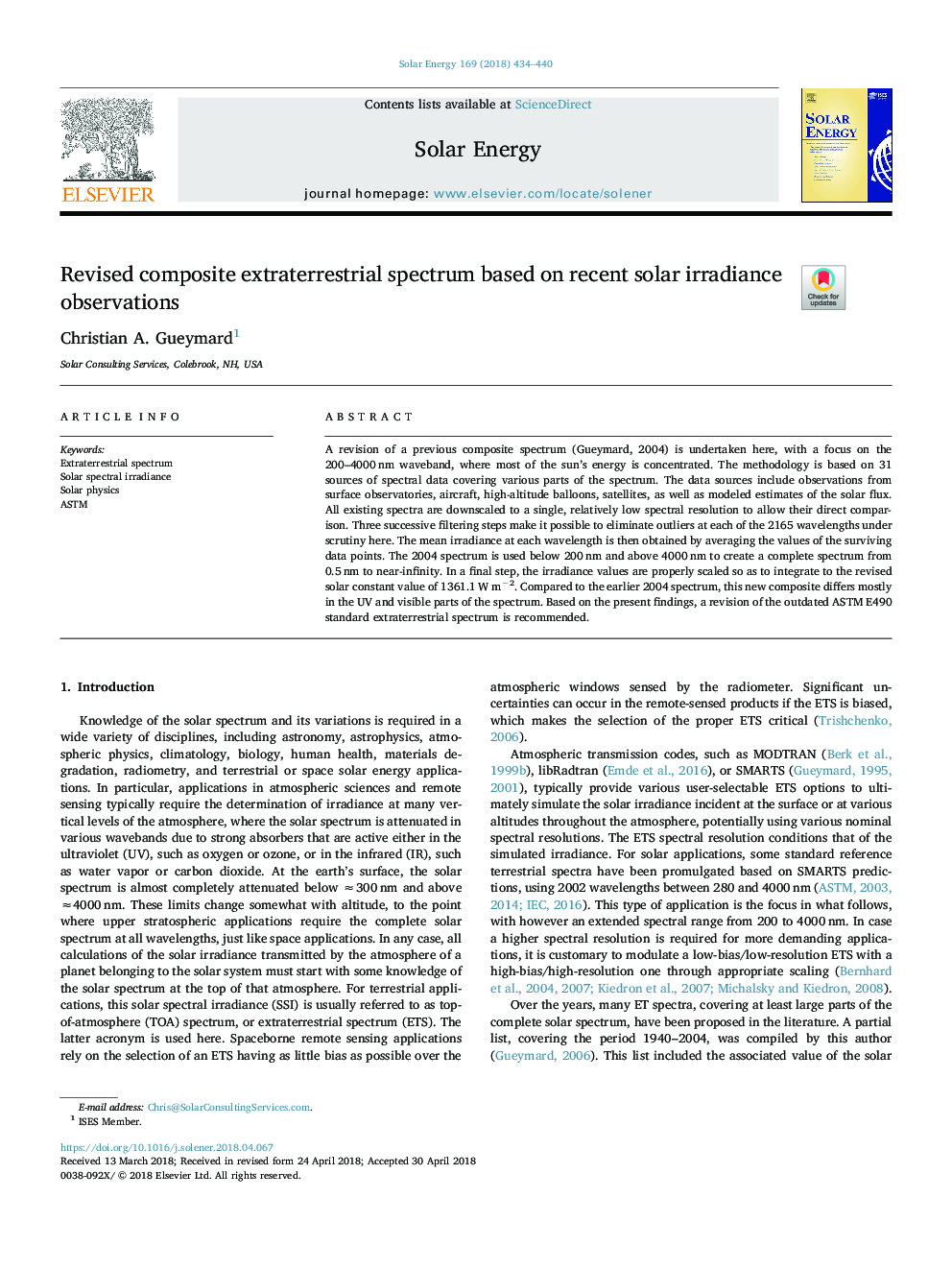| Article ID | Journal | Published Year | Pages | File Type |
|---|---|---|---|---|
| 7935215 | Solar Energy | 2018 | 7 Pages |
Abstract
A revision of a previous composite spectrum (Gueymard, 2004) is undertaken here, with a focus on the 200-4000â¯nm waveband, where most of the sun's energy is concentrated. The methodology is based on 31 sources of spectral data covering various parts of the spectrum. The data sources include observations from surface observatories, aircraft, high-altitude balloons, satellites, as well as modeled estimates of the solar flux. All existing spectra are downscaled to a single, relatively low spectral resolution to allow their direct comparison. Three successive filtering steps make it possible to eliminate outliers at each of the 2165 wavelengths under scrutiny here. The mean irradiance at each wavelength is then obtained by averaging the values of the surviving data points. The 2004 spectrum is used below 200â¯nm and above 4000â¯nm to create a complete spectrum from 0.5â¯nm to near-infinity. In a final step, the irradiance values are properly scaled so as to integrate to the revised solar constant value of 1361.1â¯Wâ¯mâ2. Compared to the earlier 2004 spectrum, this new composite differs mostly in the UV and visible parts of the spectrum. Based on the present findings, a revision of the outdated ASTM E490 standard extraterrestrial spectrum is recommended.
Related Topics
Physical Sciences and Engineering
Energy
Renewable Energy, Sustainability and the Environment
Authors
Christian A. Gueymard,
